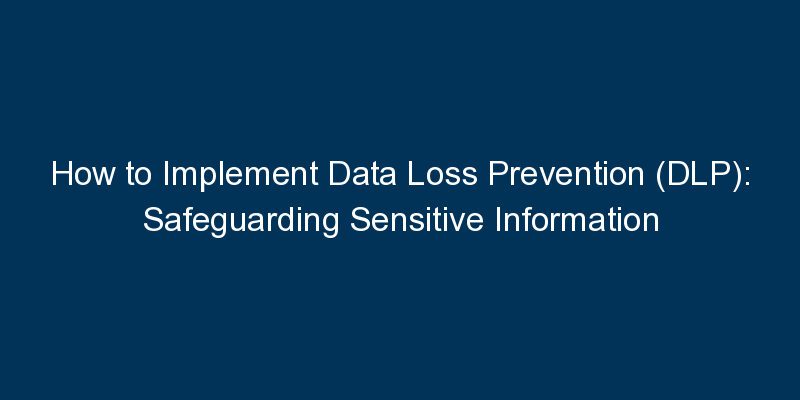Implementing Data Loss Prevention (DLP) is crucial for organizations to protect sensitive data from unauthorized disclosure or leakage. This blog provides a comprehensive guide on how to implement DLP, enabling businesses to establish robust mechanisms for safeguarding critical information assets.
Introduction:
Data Loss Prevention (DLP) involves deploying strategies and technologies to prevent the unauthorized exposure or transmission of sensitive data. This proactive approach is essential for maintaining data integrity and complying with data protection regulations. This guide explores the key steps in implementing DLP effectively.
Key Steps to Implement Data Loss Prevention (DLP):
- Identify and Classify Sensitive Data: Begin by identifying and classifying sensitive data within the organization. Understand the types of information that need protection, including personally identifiable information (PII), financial data, and intellectual property.
- Define DLP Policies: Establish clear DLP policies that outline how sensitive data should be handled, transmitted, and stored. Define rules and conditions for data access, sharing, and encryption based on the classification of the information.
- Deploy DLP Technology: Select and deploy DLP technology that aligns with the organization’s requirements. DLP solutions can include content discovery tools, encryption technologies, and monitoring mechanisms to track the movement of sensitive data.
- Implement Endpoint DLP Controls: Extend DLP controls to endpoint devices such as laptops, mobile devices, and removable storage. This ensures that sensitive data remains protected regardless of where it is accessed or stored.
- Monitor and Enforce DLP Policies: Regularly monitor and enforce DLP policies to prevent unauthorized data access or transmission. Implement real-time monitoring tools that can detect and respond to potential data leakage incidents.
- User Education and Awareness: Conduct user education and awareness programs to educate employees about the importance of data security. Encourage responsible data handling practices and provide training on recognizing and reporting potential security incidents.
Conclusion:
Implementing Data Loss Prevention is essential for organizations aiming to safeguard sensitive information. By following the steps outlined in this guide, businesses can establish a comprehensive DLP strategy, mitigate data loss risks, and uphold the confidentiality and integrity of critical data assets.






















Comments